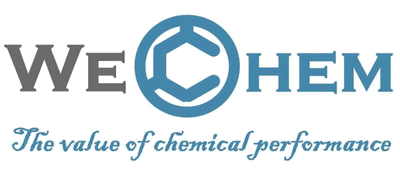资讯中心
It’s an exciting year in prospect for the global helium business, perhaps what we might describe as a step into the unknown too, as new capacity gradually enters the fray and we come to terms with what the new helium business of looks like.
From shortage to balance, shortage to surplus, and shortage to more plentiful again in 2020. That’s been the story of the helium business over the last decade or more.
Up until the onset of the Covid-19 pandemic just over 12 months ago, the global helium markets were still in the grip of Helium Shortage 3.0, a market squeeze traced back to February 2018. Reduced demand and economic/industrial activity largely signalled an early easing of that shortage.
Indeed, Phil Kornbluth, President of Kornbluth Helium Consulting and Editorial Advisory Board member for gasworld, had written just last month, “Since Covid-19 took a chunk out of helium demand and brought Helium Shortage 3.0 to a rather abrupt end in February 2020, there has been a relative lack of headline events impacting helium markets. The market has seen sufficient supply, the end of steep price increases and no large new sources have entered the market.”
There was also good news to be seen in the Middle East in the early weeks of 2021, with the lifting of the Saudi-led embargo of Qatar, though the impact had initially been relatively negligible; mandatory Covid-19 related quarantines of truck drivers had made it impractical to ship helium containers over land between Ras Laffan and the Jebel Ali port in Dubai, Kornbluth explained.
gasworld's Molly Burgess sits down with Rob Cockerill to explain why a development in the global helium business made his Editor's Picks of Q1 2021.
And therein lies just one reminder of the helium supply chain complexities. There have been several such reminders during the first quarter (Q1) of 2021.
Shipments via cargo vessels from the Qatari port of Hamad to Jebel Ali were still not permitted, a remnant of the dispute between the UAE and Qatar; the trucking situation was not expected to change until the Covid-19 pandemic has eased, Kornbluth cautioned.
The temporary blocking of the Suez Canal in March was another. When a huge container ship ran aground and became wedged sideways across the canal, it blocked a significant trade waterway. Though only a blockage of around one week, it spiralled into the source of much concern for the global shipping industry, with almost 400 ships at one point stuck in a tailback to pass through the 120-mile canal.
According to reports, as much as 12% of global trade, around one million barrels of oil and circa 8% of liquefied natural gas (LNG) pass through the Suez Canal each day.
Helium product destined for European markets also passes through the canal, I understand, and had the blockage continued beyond a week or more, that could potentially have had an impact on those markets. In the end, the story was a non-starter – but it demonstrated how it could have been a very different matter had that ship not been so swiftly re-floated and recovered.
When we consider that US West Coast ports have also been bottlenecked recently, and sources in Qatar have been partially affected by planned maintenance from early March through to mid-April, we are reminded of the vulnerability that remains in the global helium supply chain.
Helium supply has also been impacted by the severe winter weather that impacted the US mid-continent and Texas, shutting down the Bureau of Land Management’s (BLM) Crude Helium Enrichment Unit and Pipeline System for the better part of a week, Kornbluth explained last month. The BLM had planning for further a 10-13 day shutdown commencing 15th March, as well as a second planned shutdown this month (April).
All of these respective developments arguably don’t merit a story in themselves, but the cumulative effect is a tightening up of the market and localised shortages in some instances due to the sheer logistical efforts involved.
New normal ahead
With both the Qatar 3 project and the long-awaited Amur Project in Eastern Siberia from Gazprom said to be on-track for their respective start-ups in June and July, a new normal of ‘sufficiency’ is expected in the helium supply chain.
In fact, building upon the arrival of a much more ‘favourable’ helium market over the last year, the dawn of these significant new helium hotspots is likely to signal a truly new normal and that aforementioned step into the unknown, in many respects. After a quarter in which we’ve once again been subtly reminded of the supply chain’s vulnerability to plant downtime, geopolitics and unexpected events, the timing could not be more pressing.
对于全球氦气业务来说,这是令人振奋的一年,随着新产能逐渐进入竞争状态,从短缺到平衡,从短缺到剩余,再到2020年,短缺将再次出现。这就是过去十年或更长时间里氦气业务的故事。
直到12个月前新冠肺炎大流行开始之前,全球氦气市场仍处于氦气短缺3.0之下,市场紧缩可追溯到2018年2月。需求减少和经济/工业活动的减少在很大程度上预示着早期的氦气短缺。
实际上,科恩布鲁斯咨询公司氦气咨询和编辑顾问委员会主席菲尔·科恩布鲁斯(Phil Kornbluth) 就在上个月写道:“自从新冠肺炎淘汰了一部分氦气需求以来,到2020年2月,氦气短缺3.0才刚刚结束。 目前市场供应充足,价格急剧上涨已经结束,没有大量新的资源进入市场。”
除了沙特阿拉伯领导的卡塔尔禁运取消了,在2021年初的中东地区也有好消息,尽管其影响相对可以忽略不计。科恩布鲁斯解释说,强制性的卡车司机隔离措施使将影响拉斯拉凡(Ras Laffan)和迪拜杰贝阿里(Jebel Ali)之间的陆地氦气容器运送。
在此仅提醒人们氦气供应链的复杂性。 在2021年第一季度(Q1)期间,已经有过几次这样的提醒。
卡塔尔的哈马德杰贝阿里港口货船出货量仍然不多,阿联酋和卡塔尔之间也争端不断; Kornbluth警告说,在新冠肺炎大流行缓解之前,卡车的运输状况不会改变。
三月份的苏伊士运河临时封锁是另一回事。尽管只有一个星期左右的阻塞,但它却成为全球航运业备受关注的问题,有近400艘船排成长龙,足足有120英里长。
据报道,每天有多达一百万桶的石油和约8%的液化天然气(LNG)通过苏伊士运河,占全球贸易的12%。
据我了解,运往欧洲市场的氦气产品也通过运河,并且阻塞持续了一周或更长时间,这可能会对市场产生影响。
美国西海岸的港口也遇到了瓶颈,并且从3月初到4月中旬,卡塔尔的资源已部分受到影响,全球氦气供应链仍然存在脆弱性。
Kornbluth上个月解释说,氦气的供应也受到了美国中部大陆和得克萨斯州的严冬气候的影响,并在一周的大部分时间里关闭了粗氦浓缩装置和管道系统。BLM计划从15日开始关闭 ,并计划在本月(4月)进行第二次关闭。
新常态即将来临
据称,俄罗斯天然气工业股份公司的卡塔尔3号项目和西伯利亚东部期待已久的阿穆尔项目都将分别在6月和7月启动,因此氦气供应链有望出现“正常”的新常态。
实际上,在去年氦气市场更加“有利”的基础上,这些重要的新氦热点的到来很可能预示着一种真正的新常态,并且上述提到的许多方面都已进入未知领域。 我们再次被提醒:供应链易受设备停机,地缘政治和突发事件的影响。
引用出处 Citation:
https://www.gasworld.com/reminders-of-the-helium-supply-chain-complexities/2020762.article
